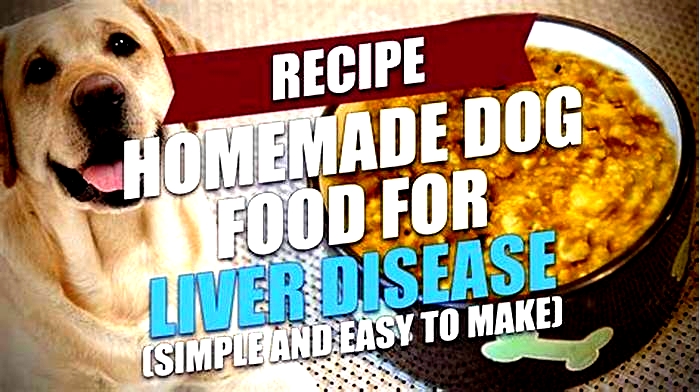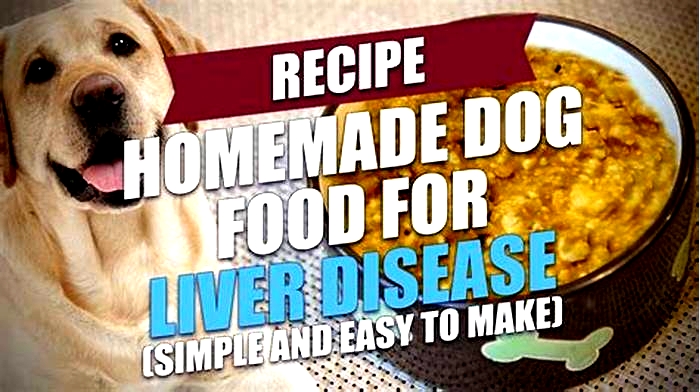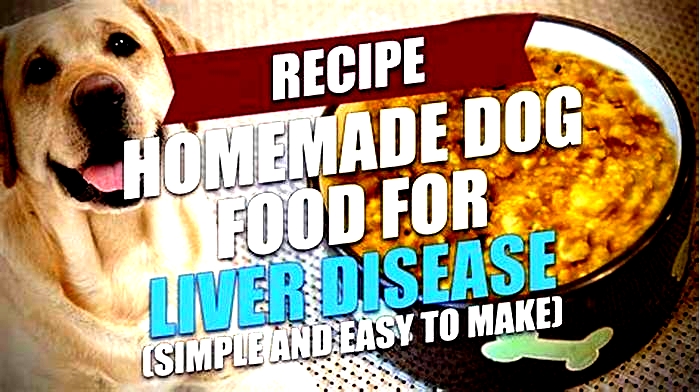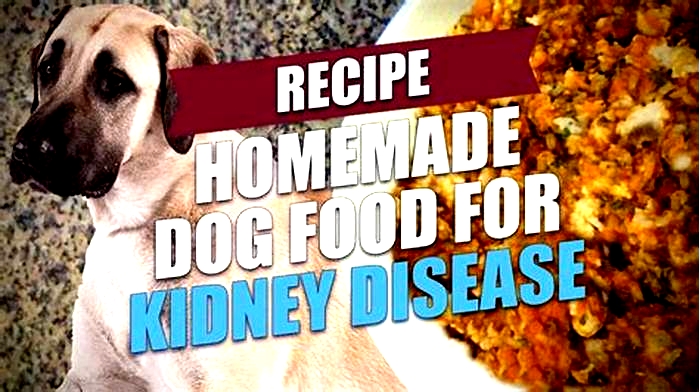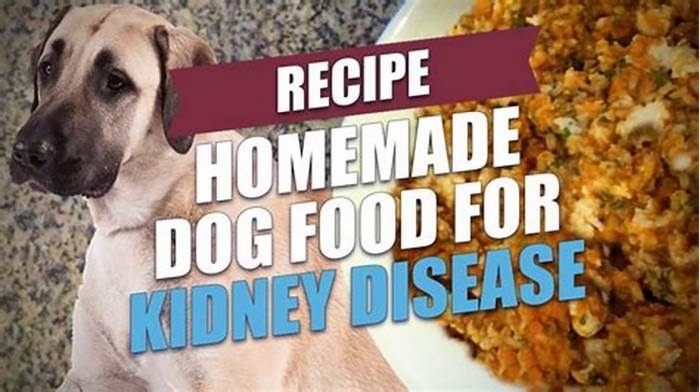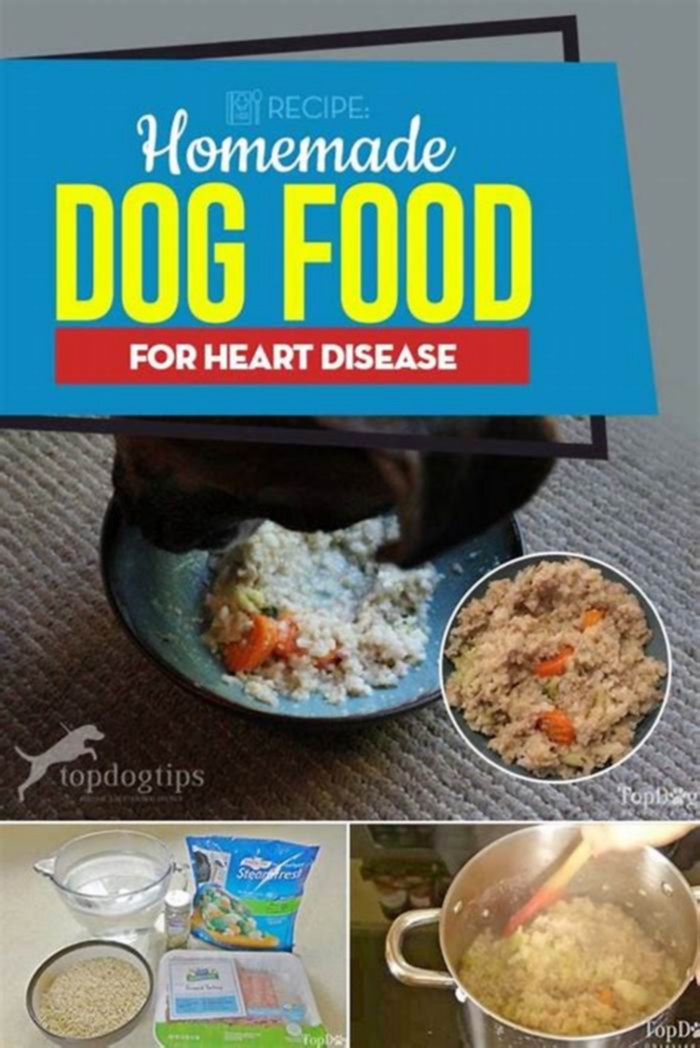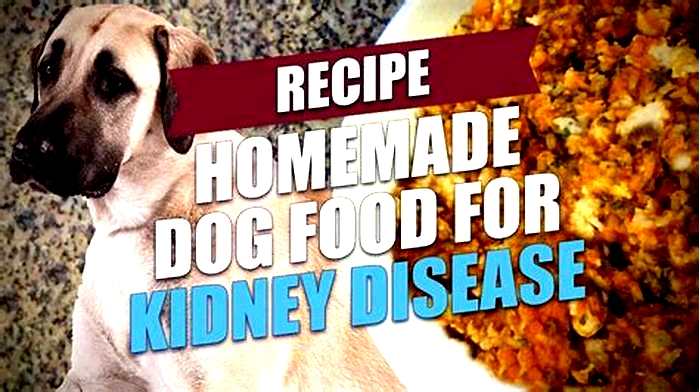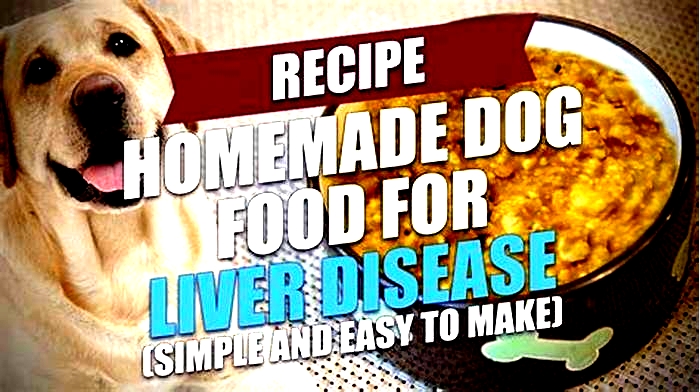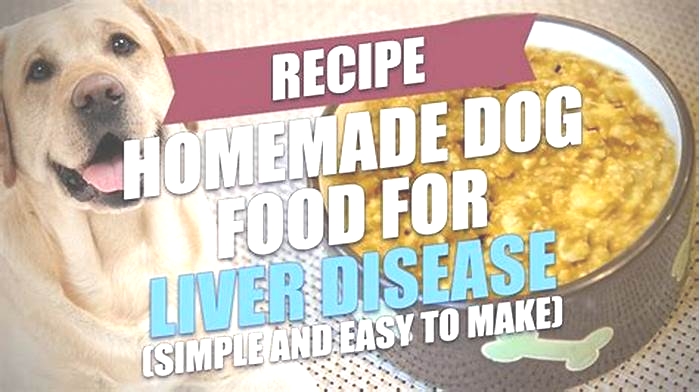homemade dog food recipes for liver disease

Homemade Dog Food for Liver Disease Recipe (So Easy To Make!)
Liver disease, or Canine Liver Disease (CLD), is, unfortunately, a common illness when it comes to our furry best friends and can be incredibly serious.
Liver disease, or Canine Liver Disease (CLD), is, unfortunately, a common illness when it comes to our furry best friends and can be incredibly serious. Some breeds, such as West Highland White Terriers, are more prone to it than other breeds. There are a variety of reasons why your pup may have contracted CLD, including injuries, a diet that is lacking in proper nutrition, genetics, or just that theyre simply getting older. They may also have had an infection or some sort of injury or trauma in and around their liver or have been on a medication that caused liver damage. Thankfully, CLD does not have to be permanent and can be managed and even cured with the proper diet. Here are some foods that are the most beneficial for getting your pups CLD under control and a simple recipe to try.
How do I know my dog has liver disease?
Even though liver disease in dogs can be contracted for a variety of different reasons, you will see the same symptoms in every dog. CLD can lead to liver failure quickly so if you notice these symptoms, its important to get them under control quickly. Your pups liver is vital to its ability to live a long and healthy life and CLD prevents it from working properly. If you see any of the following symptoms, schedule an appointment with your veterinarian right away. Your veterinarian should always be the one to diagnose your pup dont decide they have canine liver disease on your own and try to change their diet and handle it yourself. Some of the most blatant symptoms of liver disease in dogs are:
- Jaundice Youve likely heard of jaundice as it relates to often newborn babies. This is a yellowish tinge to the skin, which you will normally notice around the eyes, gums, and ears on your dog.
- Hepatic encephalopathy This can include a wide variety of neurological symptoms that include seizures, confusion, disorientation, blindness, anxiety, and personality changes among others.
- Gastrointestinal issues These can also present in a wide variety of ways, such as diarrhea, vomiting, decreased appetite, visibly increased thirst, excessive urination, weight loss, and changes in stool color.
What should I feed my dog with canine liver disease?
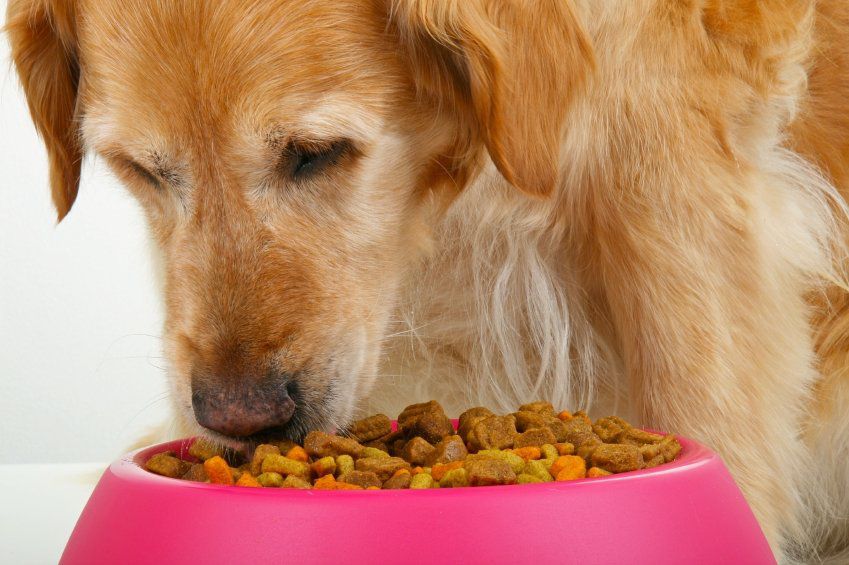
Many dog owners opt to feed their pup a homemade liver disease diet as this is the only way to know exactly what youre feeding your dog. Many commercial dog foods contain unnecessary ingredients that will not improve your pups liver condition but some are better than others. Your vet can guide you towards which ones are best. Raw food is also an option, although whether raw food is actually the best choice for your pups health is still debatable. If you do decide to change your pets diet, the change should happen slowly and gradually. Most of us have made the mistake at least once of trying to change your pups diet too fast and dealing with an upset tummy as a result.
You should feed your dog several times a day if possible, ideally, you should give them four to five small meals a day. This might be tricky if you work during the day so you may need to ask for assistance from a family member or hire someone to stop in during the day. This may seem excessive but it is ideal for dogs with canine liver disease as its easier on both their stomach and their liver.
Homemade Canine Liver Disease Diet
Keep in mind that the ideal amount of protein a pup with liver disease should have depends on how advanced their canine liver disease is. For some, an increased amount of protein is necessary but for others, it will be a lesser amount. Regardless, you should feed your dog high-quality protein and give them moderate amounts per meal. You should also avoid foods high in copper such as organ meats (e.g. beef liver), as well as salmon, pork, duck, and lamb.
Chicken, Oatmeal and Cottage Cheese
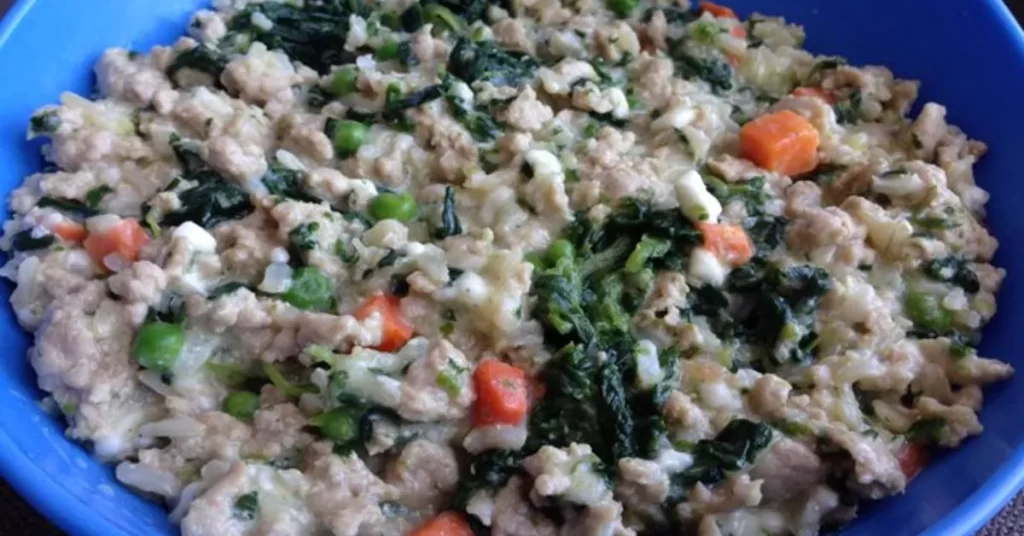
This is a pet food recipe that is easy for your pups body to process, full of high-quality protein and rich in fiber to help aid in digestion. It does not require a whole lot of prep time; however, we recommend at least doubling this recipe if you wish to have leftovers which can easily be frozen and thawed when needed. Make sure that the ingredients you use are low fat. Try to stick to boneless, skinless chicken breasts to ensure youre giving your pup lean, low-fat meat.
Ingredients
- of a cup chicken
- of a cup cottage cheese
- cup oatmeal
- cup canned pumpkin (not pumpkin pie filling)
- 1 egg
Directions
- Dice your chicken before cooking. Make sure that the pieces are small and able to be easily digested. This can be adjusted to the size of your pup. Then, cook the chicken any way you prefer (boil, bake, etc.)
- Cook the oatmeal according to package instructions and boil your egg separately. Combine with the chicken when they have cooked
- Add the remaining ingredients and stir.
- Once completely cooled, serve to your pup. Leftovers can be stored in your fridge for four to five days while remaining portions can be frozen.
As previously stated, always consult with your vet before changing your pups diet. Depending on the stage of the liver disease, they may need a more specific diet geared to their needs. Any sort of illness in your dog should be taken seriously, and canine liver disease can become serious if not treated. Although it may seem like quite an effort to constantly make homemade food for your dog, the prep time is relatively quick and it could add really improve your dogs health. So, is it worth it? Absolutely.
10 Homemade Dog Food Recipes for Kidney and Liver Health
Welcome to our gourmet guide for the health-conscious hound! If your furry friend is facing kidney or liver challenges, youre in the right place. Weve cooked up 10 scrumptious homemade dog food recipes, each a culinary masterpiece designed to support their delicate health needs. Lets embark on this flavor-filled journey, where nutrition meets deliciousness!
1. Chicken & Sweet Potato Symphony
Ingredients: Boneless chicken, sweet potato, kale, low-sodium broth, coconut oil.
Why Its Great:
- Potassium Power: Sweet potatoes maintain healthy blood pressure.
- Vitamin C Boost: Kale strengthens immunity.
- Lean Protein: Chicken supports kidney health without strain.
2. Salmon & Spinach Serenade
Ingredients: Canned salmon, brown rice, spinach, yogurt, fish oil.
Why Its Great:
- Omega-3 Magic: Salmon reduces inflammation, aiding liver function.
- Complex Carbs: Brown rice for energy without kidney stress.
- Antioxidant Haven: Spinach is rich in essential minerals.
3. Turkey & Butternut Squash Boogie
Ingredients: Ground turkey, butternut squash, broccoli, quinoa, low-sodium broth.
Why Its Great:
- Digestible Protein: Turkey is gentle on the stomach.
- Potassium Rich: Butternut squash supports kidney function.
- Fiber-Filled: Broccoli adds vitamin C and aids digestion.
4. Beef & Barley Ballad
Ingredients: Lean beef, barley, carrots, green beans, low-sodium broth.
Why Its Great:
- Iron & B Vitamins: Beef nourishes without kidney overload.
- Fiber Boost: Barley aids healthy digestion.
- Vitamin Rich: Carrots and green beans for a nutrient punch.
5. Turkey & Cranberry Tango
Ingredients: Ground turkey, cranberries, brown rice, Brussels sprouts, low-sodium broth.
Why Its Great:
- Antioxidant Burst: Cranberries support liver health.
- Detox Aid: Brussels sprouts with vitamin C and sulforaphane.
- Energy Sustainer: Brown rice for kidney-friendly energy.
6. Chicken & Apple Cha Cha Cha
Ingredients: Chicken breast, apples, quinoa, sweet potato, low-sodium broth.
Why Its Great:
- Pectin Plus: Apples promote healthy digestion and detox.
- Protein Complete: Quinoa is kind to kidneys.
- Beta-Carotene Boost: Sweet potatoes for overall health.
7. Salmon & Broccoli Bonanza
Ingredients: Canned salmon, broccoli, brown rice, zucchini, fish oil.
Why Its Great:
- Prebiotic Pro: Broccoli encourages healthy gut bacteria.
- Kidney Care: Zucchini is low in phosphorus and sodium.
- Extra Omega-3s: Fish oil for optimal liver function.
8. Beef & Lentil Lovebird
Ingredients: Lean beef, lentils, carrots, celery, low-sodium broth.
Why Its Great:
- Plant Protein: Lentils provide gentle fiber.
- Vitamin Mix: Carrots and celery for overall health.
- Digestible Delight: Beef as a protein source.
9. Lamb & Sweet Potato Samba
Ingredients: Ground lamb, sweet potato, kale, white rice, low-sodium broth.
Why Its Great:
- Lean Protein: Lamb is gentle on kidneys.
- Immunity Kick: Kale is a vitamin and mineral powerhouse.
- Carb Comfort: White rice for digestible energy.
10. Turkey & Pumpkin Pie
Ingredients: Ground turkey, pumpkin puree, oatmeal, green beans, low-sodium broth.
Why Its Great:
- Fiber-Full: Pumpkin aids digestion and health.
- Oatmeal Oasis: Gentle fiber and complex carbs.
- Vitamin Veg: Green beans for essential nutrients.
Conclusion: A Feast of Flavors for Fido
Creating these dishes is more than just cooking; its an act of love. Each recipe is a testament to the care you have for your dogs health and happiness. By choosing homemade meals, youre ensuring they get the best fresh ingredients, tailored nutrition, and a whole lot of flavor. So, aprons on and let the culinary adventure begin your pups tail will surely wag in gratitude!
Remember: Always consult with your veterinarian before making any dietary changes, especially for dogs with health issues. Your vet can provide guidance on the specific nutritional needs of your dog based on their condition.
FAQs: Nourishing Knowledge for Your Canines Care
Q1: Can homemade dog food completely replace commercial diets for dogs with kidney or liver disease?
Insightful Answer: While homemade dog food offers numerous benefits, including tailored nutrition and fresh ingredients, its not always a standalone solution. Dogs with kidney or liver disease often require specific nutrient balances that can be challenging to achieve at home. Commercial diets formulated for these conditions are scientifically balanced to manage disease progression. Therefore, homemade diets should ideally complement, not replace, vet-recommended commercial diets. Regular consultations with a veterinary nutritionist are crucial to ensure your homemade recipes meet your dogs unique dietary needs.
Q2: How do I transition my dog from commercial to homemade food safely?
Detailed Guidance: Transitioning should be gradual to avoid gastrointestinal upset. Start by mixing a small amount of the homemade food with their current diet, gradually increasing the homemade portion over a week or two. Monitor your dogs response closely look for signs of digestive discomfort or food refusal. Adjust the transition pace based on their tolerance. Consistency in meal preparation is key to avoid sudden nutrient fluctuations.
Q3: Are there any common ingredients in homemade dog food that should be avoided for dogs with kidney or liver issues?
Critical Insights: Yes, certain ingredients can exacerbate kidney or liver problems. High phosphorus foods like certain meats and dairy products should be limited for kidney health. Sodium-rich ingredients can also be problematic, necessitating low-sodium choices. For liver issues, avoid high-fat foods as they can strain liver function. Always exclude toxic foods like onions, grapes, and chocolate. Each dogs tolerances can vary, so personalized advice from a vet is essential.
Q4: How important is the balance of macronutrients (proteins, fats, carbohydrates) in homemade diets for these conditions?
Nutritional Balance: Macronutrient balance is critical, especially for dogs with health issues. Protein quality and quantity need careful adjustment too much can burden the kidneys, too little can lead to muscle loss. Fats provide essential fatty acids and energy but must be moderated in liver disease. Carbohydrates should be easily digestible, with a focus on fiber to aid gastrointestinal health. Balancing these macronutrients requires precision to support disease management and overall health.
Q5: Can supplements be necessary in a homemade diet for dogs with kidney or liver disease?
Supplemental Necessities: Often, supplements are vital to fill nutritional gaps in homemade diets. Dogs with kidney disease may benefit from omega-3 fatty acids, B vitamins, and certain antioxidants. For liver disease, supplements like milk thistle and SAMe can be beneficial. However, indiscriminate supplementation can be harmful. Its imperative to consult with a vet to determine the appropriate supplements and dosages based on your dogs specific condition and dietary intake.
Q6: How can I ensure the homemade diet is palatable for my dog while still being health-conscious?
Palatability vs. Health: Balancing taste and health starts with high-quality, fresh ingredients. Cooking methods like slow-cooking or roasting can enhance flavors naturally. Experiment with dog-safe herbs and spices for variety. Texture adjustments, like mashing or pureeing, can also improve palatability, especially for older dogs or those with dental issues. Regularly introducing small variations in ingredients can keep meals exciting for your dog, without compromising their dietary needs.
Q7: What role does hydration play in homemade diets for dogs with kidney or liver disease?
Hydration Focus: Adequate hydration is paramount, especially for kidney health. Homemade diets, often higher in moisture than dry kibble, can aid hydration. Including ingredients with high water content, like cucumbers or watermelon, can further promote fluid intake. Always ensure fresh water is available. In some cases, additional hydration through wet food or broths may be recommended by your vet.
Q8: How do I monitor my dogs health and adjust the diet accordingly?
Monitoring and Adjustments: Regular veterinary check-ups are essential to monitor your dogs condition and dietary effectiveness. Blood tests can reveal changes in kidney or liver function, prompting dietary adjustments. Watch for changes in appetite, weight, energy levels, and digestion. Keep a detailed food diary to track what works and what doesnt, making it easier to pinpoint and adjust specific dietary components.
Q9: How do I calculate the correct portion sizes for my dog when feeding homemade meals?
Precision in Portioning: Determining the right portion size is crucial and depends on factors like your dogs weight, age, activity level, and specific health condition. Start by consulting a veterinary nutritionist who can provide a tailored caloric requirement based on these factors. Use a kitchen scale for accurate measurement of ingredients to ensure consistency. Regularly monitor your dogs weight and adjust portions as needed, as homemade meals can vary in caloric density compared to commercial foods.
Q10: Are there any risks of nutrient imbalances in homemade diets, and how can they be mitigated?
Balancing Act: Homemade diets, while beneficial, can risk nutrient imbalances, particularly in vitamins and minerals. To mitigate this, a diverse range of ingredients is key, ensuring a spectrum of nutrients. However, diversity alone isnt enough. Understanding the nutritional profile of each ingredient is vital. Incorporating a vet-recommended vitamin and mineral supplement can help balance the diet. Regular nutritional analysis, either through software or veterinary consultation, can help identify and correct imbalances.
Q11: How can I ensure the safety and quality of ingredients used in homemade dog food?
Safety and Quality Assurance: Source high-quality, human-grade ingredients. Avoid foods that are close to expiration or show signs of spoilage. Organic produce can reduce exposure to pesticides, and free-range or grass-fed meats may offer better nutrient profiles. Wash fruits and vegetables thoroughly to remove contaminants. Cook meats to safe internal temperatures to kill harmful bacteria. Store ingredients properly, and avoid cross-contamination during meal preparation.
Q12: What are the signs that my dog is thriving on a homemade diet?
Signs of Success: A dog thriving on a homemade diet typically exhibits a glossy coat, healthy skin, bright eyes, and consistent, healthy bowel movements. You should observe a good energy level and stable weight. Regular veterinary check-ups can confirm internal health markers, such as kidney and liver function, are within normal ranges. Behavioral cues, like eagerness to eat and overall happiness, also indicate a successful diet.
Q13: How do I handle meal preparation and storage for convenience and safety?
Meal Prep Mastery: Prepare meals in batches to save time, cooking enough for several days or weeks. Portion meals according to your dogs daily intake and store them in the refrigerator or freezer in airtight containers. Label containers with preparation dates. Thaw frozen meals in the refrigerator, not at room temperature, to reduce bacterial growth. Discard any uneaten food left in the bowl after mealtime to prevent spoilage.
Q14: Can homemade diets benefit dogs with specific allergies or sensitivities?
Allergy Adaptations: Homemade diets can be highly beneficial for dogs with allergies or sensitivities, as they allow complete control over ingredients. Identify and eliminate allergens based on your dogs history or allergy testing. Use hypoallergenic ingredients and consider novel protein sources your dog hasnt been exposed to. Introduce new ingredients slowly and monitor for adverse reactions. Consistency is key to avoiding accidental exposure to allergens.
Q15: How do I incorporate variety in homemade dog food while maintaining nutritional balance?
Variety with Vigilance: Introduce variety in proteins, vegetables, and carbohydrate sources while keeping an eye on the overall nutritional balance. Rotate ingredients weekly or monthly, ensuring each meal remains complete and balanced. Use a variety of colors in vegetables for a range of antioxidants and phytonutrients. However, any changes should be gradual to avoid digestive upset. Keep a record of various recipes and their effects on your dogs health to guide future meal planning.
HELP US PUT FOOD ON THE TABLE

